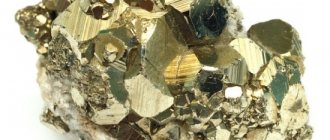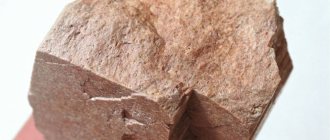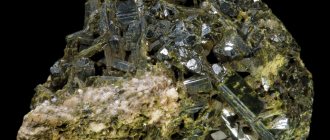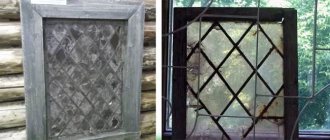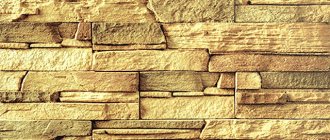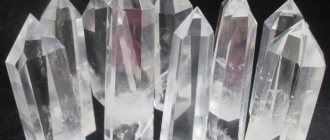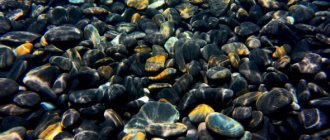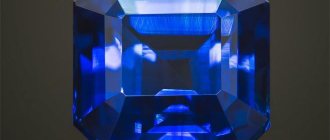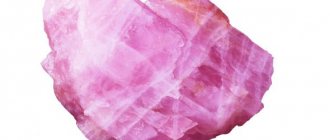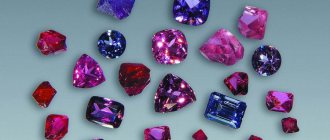History of the mineral
Albite is one of the few minerals whose “parents”, history of name and date of birth are known.
These are geologists Berzelius and Hahn, who discovered an unknown mineral in their native Sweden in 1815. The choice of name was determined by the color: the Latin albus means “white”.
Since the mineral was not suitable for precious or semi-precious stones, practical Europeans were not particularly interested in it. Only a century later, the guru of Soviet mineralogy, Alexander Evgenievich Fersman, did this. The stimulus was the discovery near the White Sea of unknown spars with iridescence from grayish blue to blue violet. He named the stones Belomorites.
Albite stone
Albite also appears in the literature as white feldspar, albiclase, and white schorl.
Caring for albite products
In addition to its affordable price and beautiful appearance, feldspar is loved by jewelry manufacturers for another reason. It is quite easy to care for and undemanding; it does not require any special care measures.
The only thing to remember is that albite stone is quite fragile. It must be protected from falls and impacts. It is better to store wrapped in a soft cloth. If the crystal breaks, collect the fragments carefully and carefully - they are very sharp.
To remove dust and dirt from the mineral, just rinse it with cold water. Then blot with a piece of dry and soft cloth. If the stone has been used for medicinal or magical purposes for a long time, you can add a little salt to the water. Ordinary kitchen salt is a talisman against negativity and evil, which our ancestors knew about from time immemorial. This will be quite enough for the decoration to please the eye for a long time, and for the magical talisman to serve faithfully.
Physico-chemical characteristics
Albite is an aluminosilicate from the group of feldspars (a subgroup of plaxioglas).
Characteristics of the stone:
- chemical formula – NaAlSi3O8;
- hardness on the Mohs scale – 6.1–6.4;
- shine – glass;
- the fault is conchoidal, uneven;
- crystal shape – tabular, needle-shaped;
- transparency – full, medium, zero;
- interaction with acids - soluble only in hydrofluoric acid;
- interaction with alkalis – zero;
- fragility – high;
- melting point – 700–800 °C, depending on the variety;
- colors – white, colorless; red, purple, golden, yellowish, grayish-brown tones.
The color richness is created by the elements that make up albite: chromium, lead, calcium, magnesium.
The formation of albite crystals takes decades. When heated, their structure is deformed.
Physical and chemical parameters
According to scientific classification, albite stone is an aluminosilicate from the plagioclase subgroup.
Its basic composition includes silicon, aluminum, sodium, oxygen. These four elements create the formula and pure "moon" stones.
Plus impurities. A small amount of calcium, potassium, and magnesium determines the degree of saturation and variety of shades for which albite is famous.
We recommend: LABRADOR - the treasure of Hyperborea
| Formula | Na[AlSi3O8] |
| Impurity | K, Ca, Rb, Cs |
| Physical properties | |
| Color | White gray |
| Stroke color | White |
| Shine | Glass |
| Hardness | 6 — 7 |
| Cleavage | Perfect by {001}, average by {010} |
| Kink | Uneven, conchoidal; fragile |
| Density | 2.61—2.63 g/cm³ |
| Crystallographic properties | |
| singonia | Triclinic (primitive) |
The stone is indifferent to heat and chemicals (except hydrofluoric acid).
Where is albite mined?
An industrial-scale mineral deposit was first discovered on the Scandinavian Peninsula, in Sweden.
Over 200 years, the geography of albite deposits has expanded, covering almost the entire planet:
- Africa – Madagascar, Zimbabwe, Kenya;
- America – USA, Brazil;
- Asia - Tajikistan;
- Europe - Russia (Ural, Transbaikalia), Greece, Norway, Switzerland.
Despite the wide distribution of the mineral, finding pure material is problematic: albite is almost always associated with other rocks.
Pure large specimens are supplied by Switzerland and the Brazilian “jewelry” state of Minas Gerais.
The heritage of Tajikistan and Norway are stones with iridescence.
Production regions
Albite, a stone of the feldspar group, is one of the most common rock-forming components of the igneous type.
Albite deposits are scattered throughout the planet:
- Africa – Kenya, Madagascar, Zimbabwe.
- Europe – Norway, Switzerland.
- America – Brazil, USA, Canada.
- Asia - Tajikistan.
Russia – Kola Peninsula, Transbaikalia, Irkutsk region, Northern Urals.
Each mineral deposit produces different raw materials:
- Transparent crystals of jewelry quality come from the African continent.
- The breed of American origin is suitable for industrialists.
- The Pamirs and northern Norway are a source of large stones with an iridescent effect.
- Switzerland and the Brazilian jewelry state of Minas Gerais are famous for their huge crystals of high purity.
Albite almost always (96%) occurs as inclusions-threads or grains in other minerals.
It is the inclusions of albite that create the effect of iridescence of the parent rock.
Mining volumes of raw materials amount to tons, but pure albite conglomerates are rare.
Varieties of mineral
The nature of the structure and description of the color determined the varieties of the mineral:
- High. The structure of the stone is chaotic, the crystals are indifferent to thermal influences (they do not melt up to 790 °C).
- Short. The crystals are ordered, but the thermal stability threshold is lower (melting at 710 °C).
- Peristerite. Blue or light blue translucent crystals. They are also recognized by iridescence or adularization. The variety of stone is named after the largest deposit in Greece - the Peristeri mountain range.
- Belomorit. Russian wealth. The mineral is named after the place of its first discovery - the coast of the White Sea. It is mined in the north of Russia. It differs from peristerite in its rich color range: blue-, gray-blue, violet crystals.
- Clevelandite. The structure makes the stone look like a layer cake. Named after the mineralogist Professor P. Cleveland.
- Periclin. White raw material, identified by very long light needle crystals.
The peculiarity of albite is that when used in a specific industry, the type of mineral matters.
Albite deposits
Albite is widely distributed in nature. It is a rock-forming mineral for pegmatites.
Well-formed crystals are rare. Most often it occurs in the form of a chaotic accumulation of grains or in the form of sugar-like aggregates.
Lamellar varieties of albite are twisted into rosettes.
In Russia, industrial stone mining is carried out in Karelia, on the Kola Peninsula (Western Keivy) and in the Urals.
This mineral is also found in Poland, Australia, Japan, Kenya, Germany and many other countries.
Where is the mineral used?
Albite is one of the “youngest” minerals for humans. However, the physicochemical properties of albite and its color range ensured its demand and use in various fields:
- These are test samples for studying metamorphic processes. This was influenced by the origin of albite and the participation of the mineral in their formation.
- The albite mineral is a good component that gives traditional finishing materials a new “sound.” Plus refractories and abrasives, an additive to concrete for strength. The industry is in demand for durable American and Russian stones.
- The mineral is quite hard, resistant to heat and abrasion. Therefore, kitchen ceramics containing albite are famous for their reliability and durability.
- Jewelers classify albite as a “moon” stone. Favorites include transparent or translucent minerals from the Black Continent and specimens with iridescence (that is, iridescent iridescence). The ideal cut for albite is a flat cabochon.
Collectors look for druses of unusual shapes or combinations of stones. Clevelandite is especially desirable as a collection stone. It is found in Transbaikalia, the Swiss Alps, Norway, and the Pamirs (Tajikistan).
Mineral deposits
Despite the fact that albite deposits are located throughout the planet, finding mineral deposits in their pure form is not so easy. Basically, it is mined together with other rocks and minerals, and deposits are classified depending on the purpose of its further use.
Transparent crystals, from which beautiful jewelry is made, are mined on the African continent - in Kenya, Zimbabwe and Madagascar. Large mines of albite, which is used industrially, are located in the United States (Pennsylvania, Georgia and Virginia) and in the vicinity of Ottawa.
Many mineral deposits are located in Russia. Transparent stones are mined in the Irkutsk region, the Middle Urals and the Kola Peninsula. The surroundings of the Malkhansky ridge of Southern Transbaikalia are famous for the mining of collection samples of clevelandite - lamellar albite, which is also found in California, USA.
Large crystals are mined in Binntal in Switzerland and Minas Geras in Brazil. Stones mined in the Eastern Pamirs of Tajikistan and the northern part of Norway have an iridescent effect. Back to contents
Price
The price of albite is low. It is determined by the type, degree of processing, weight (price, thousand rubles):
- ball, 4.5 cm – 4.9;
- egg, 5.5x4 cm – 3.8;
- schorl with albite – 4.1–4.2;
- tourmaline in albite – 2.8–9.8.
Jewelry almost always contains a variety of the mineral belomorite (cost, rub.):
- pendant – 490–560;
- bracelet – 780-1 390;
- necklace – 1,590-2,390;
- silver ring – 1,650;
- earrings (nickel silver) – 780.
These are the prices of Russian online stores.
How to identify a fake
Instead of beautiful minerals, they offer ordinary feldspar, glass or plastic.
The properties of natural albite help to distinguish a fake and establish the authenticity of a sample:
- Infusibility. A fire (match or lighter) is brought to the sample. The plastic will melt, but the stone will not be damaged.
- Interaction with acids . Sulfuric or hydrochloric acid is dropped onto the sample. Nothing will happen to a real stone.
- Thermal conductivity. Mineral, unlike plastic or glass, does not immediately heat up in your hands.
Ordinary specimens of white spar are cheap and are rarely counterfeited. Transparent, colored or “layered” stones are a completely different matter.
Description and origin
It belongs to silicates and is a derivative of magma. The name refers to the color of the mineral, which in Latin means white. However, gray or milky colored stones are more common. There is an optical effect around albite that looks like a rainbow glow when exposed to light rays. It appears after polishing the stone. The color of albite depends on what impurities are included in its composition. It could be chromium, lead, potassium or magnesium. The mineral is resistant to acids and has average strength.
Magical properties of the stone
Albit is a stone of the water element, under the auspices of the Moon. Its magical power waxes and wanes synchronously with the phases of the luminary.
The Sibyls of Ancient Greece and Indian magicians used albite in risky rituals. For example, summoning the dead and communicating with them. It was believed that the mineral helped to “guide” the course of the stars.
Today, the magical properties of the stone help in the following situations:
- People associated with water or sea (trawlers, cruise ships, solo fishermen).
- Travelers, geologists, business people on trips.
- The stone will prevent emotional burnout, anxiety, and insomnia. It will bring you out of depression, extinguish aggression, unmotivated irascibility.
- Albit above the front door will protect the house from the influence of dark forces or people.
Together with moonlight at night and during the day, the stone absorbs solar energy. Thanks to this “omnivorousness,” albite is in demand for occult practices as a balancer, an energy equalizer.
Adherents of Eastern practices see in this the harmony of Yin-Yang.
Distribution of albite in nature and areas of its application
Mineral distribution
Albit is widespread throughout the world, but it is almost impossible to find in its pure form. It is mainly mined together with other minerals. However, the deposit of each of them has its own classification, depending on the final purpose of mining.
If we are talking about albite used for jewelry production, then it is mined in such regions of the world as:
- Zimbabwe;
- Madagascar;
- Kenya.
But industrial albite can be found in large quantities in countries such as Brazil, the USA, Norway, Canada, Switzerland, and Russia.
Application of albite in folk medicine, jewelry and other areas
Albite is mainly used in the production of ceramic products . In addition, the mineral is used for the production of fireproof and finishing materials.
Albite stone does not belong to the category of precious or semi-precious rocks, but it is widely used in folk medicine , most often for the treatment of diseases of the internal secretion organs, as well as diseases of the following organs:
- kidney;
- stomach;
- liver;
- pancreas.
In order for the mineral to help in one way or another, the stone should be worn as an amulet or as part of a piece of jewelry until you are no longer bothered by what hurts. It is also recommended to apply it to the sore spot for at least an hour. But in the second case, the stone should first be cleaned; to do this, you need to rinse it under cold water . Healers believe that it has the ability to absorb all the negative energy that provokes discomfort and pain.
In processed form, albites are used in the following cases: in the production of costume jewelry (for example, beads or bracelets), as jewelry or as a finishing material . Stones weighing at least 5–10 carats should be cut. The most commonly used type of cut is cabochon.
Quite often, processed stones are used as part of collections. Collectors also love natural druses, where albite crystals form special structures together with other minerals, for example:
- quartz;
- hematitis;
- orthoclase.
How to wear jewelry with albite
Esotericists are sure: products with stones are not just a beautiful accessory:
- A bracelet or ring on the left hand, a brooch on the left side stimulates the achievement of external harmony (with the world and people).
- Accessories on the right hand or side allow you to contact your own inner world.
In this way, you can receive hints or help from the stone.
Emotional people are advised to wear two talismans with albite of different colors. They need to be charged, respectively, with solar and lunar energy.
Scope and scope
Albite is an interesting mineral, characterized by its dual structure. This mineral is used in gemological knowledge of the process of metamorphism, because it is one of the main components in the creation of rocks.
This spar is widely used to create beautiful jewelry in the jewelry and ceramics industries. Since it is characterized by such properties as hardness, resistance to abrasion and heat.
In the jewelry industry, albite falls under the category of "moon" stones. This mineral is rarely used. Various jewelry is made from high-quality processed rock.
In the construction industry, it is used as a finishing agent both inside and outside the building.
Albite is believed to have certain magical and healing properties. Widely used in folk medicine.
Decorations
Looking at pictures of feldspar, it is difficult to assume that it is a precious stone. As a rule, the rock is cut for collectors. But it is also used in the manufacture of various jewelry, such as beads, bracelets, earrings, and rings. As a rule, only albite crystals are used to make jewelry. The cut is made in the form of a cabochon.
Moon rock
Only three subspecies of feldspar can be classified as moonstone, one of them being albite. But it is the mineral, in its pure form, without any impurities, which is very rare. Moonstone seems to glow in the dark. There are known stones that have beautiful iridescence in the form of a star or a cat's eye. This is obtained by combining several types of minerals into one.
It is the inclusions of albite that give that characteristic glow.
Esotericists believe that moonstone has a calming effect on humans. Moonstone drives away fears and improves sleep. Pendants and earrings are made from moonstone, which endow their owner with unique inner beauty and mystery. At the same time, the stone helps relieve stress and calm down. If you wear adularia jewelry on your left hand, it helps to achieve harmony with the outside world and people. On the right - allows a person to plunge into his subtle inner world, get help and tips.
Magic properties
Esotericists believe that albite is capable of transmitting the energy of the Moon and the Sun. It is used as a way to combat depression, chronic fatigue, and stress. For people prone to irritation and aggression, it is recommended to always take amulets with albite with them. Albit absorbs negative, negative currents, and fills the owner of the talisman with calmness and patience.
For those who like hiking and traveling, it is also recommended to always have Albite with you, this promotes good luck on the road and protection from accidents. It has been proven that albite belongs to the water element. This affects its magical properties; they depend on the phase of the moon, tides and tides. It is also a sign of infinity, which is used in knowing oneself and achieving peace and tranquility, both with oneself and with the Universe.
Mineral care rules
An additional advantage of albite is its unpretentiousness.
The stone does not require specific or particularly complex care:
- It is fragile, so it is better not to drop it or test its strength.
- To store jewelry or samples, allocate a separate box or section in it. If this is not possible, you need to wrap each product in a soft cloth.
- Physical dirt is removed by rinsing the product with cool water (you can use neutral or baby soap). Then blot with a dry soft cloth.
If the stone is used as a magical or healing artifact, the energy mud is neutralized with salt water. You can bury it in the ground for two/three hours.
Treatment options
Traditional healers have found that the healing properties of the mineral are of particular importance for people suffering from ailments of the stomach and related internal organs:
- Gastrointestinal tract;
- spleen;
- liver;
- kidney;
- pancreas.
The mineral heals these organs. To do this, a person must lie down, and the stone is placed on the desired area of the body.
We recommend: Types and properties of BLUE QUARTZ
After use, the mineral is cleaned of the collected negativity. That is, pour cool water (not from the pipeline) for half an hour.
Albit by zodiac sign
Water moonstone has a special relationship with half of the Zodiac:
- As a talisman it is suitable for Cancers, Pisces, Aquarius. Balances character traits, leveling out negativity and enhancing winning moments. It will help you make easier contact with other inhabitants of the Zodiac circle, especially fiery ones.
- For Fiery Aries, Sagittarius, Leo, the stone is contraindicated due to energy incompatibility. Albit will strengthen the influence of the Black Moon in their horoscopes and attract problems.
- For other signs of the Zodiac, albite is also suitable as an assistant, although not as powerful.
Table of compatibility of albite with zodiac signs (“+++” – fits perfectly, “+” – can be worn, “-” – is strictly contraindicated).
| Zodiac sign | Compatibility |
| Aries | — |
| Taurus | + |
| Twins | + |
| Cancer | +++ |
| a lion | — |
| Virgo | + |
| Scales | + |
| Scorpion | + |
| Sagittarius | — |
| Capricorn | + |
| Aquarius | +++ |
| Fish | +++ |
Regardless of the recommendations of astrologers, you need to focus on personal compatibility with the stone. If discomfort is felt, it is better to keep it as a collector's item or give it as a gift.
Who is it suitable for?
Albite jewelry is recommended to be worn by representatives of fire signs such as Aries, Capricorn and Sagittarius. This stone will help reduce your impulsive and explosive nature and protect you from rash actions. It is suitable for dual signs, where good and evil are combined - Scorpio and Gemini. Albit will help bring out the bright side of these individuals and reduce self-destructive energy. The stone is not suitable for the earth signs Virgo and Taurus, as it will enhance their earthiness and make them slow, as well as difficult to rise to the occasion and perceive new ideas. For Leos, this mineral will help reduce worries and negative emotions; for Pisces, it will relieve excessive melancholy and fears.
